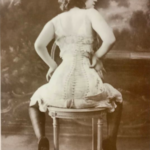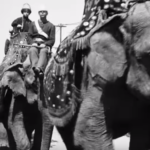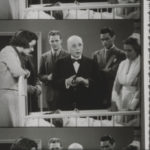Joel Archer’s Quest for Film Revival
In Queensland, Joel Archer brings elderly audiences alive with the movies of their heydays. Then he goes out and scours aging or abandoned cinemas for missing screen gems — with some tantalizing success.
By Peter Monaghan
 In a retirement home in Brisbane, Joel Archer sits behind a ticket booth, in reality just a simple particle-board mock-up that hints at what a ticket booth looked like during the golden age of cinema. “It’s a little bit imitation, but it does the job,” he says.
In a retirement home in Brisbane, Joel Archer sits behind a ticket booth, in reality just a simple particle-board mock-up that hints at what a ticket booth looked like during the golden age of cinema. “It’s a little bit imitation, but it does the job,” he says.
In hot, sticky Queensland, Archer, burly, irrepressible, approaching his late 20s, is wearing denim shorts with his theatre attendant’s white shirt and clip-on bow tie. He allows that those are “a little bit imitation,” too. But they work well enough for his purpose: to take movies to retirement homes to encourage residents to reminisce about and relive pleasant experiences of earlier times. He wants to make life a little more enjoyable for elderly men and women like those who wander up, now, to see what his set-up is about.
“Are you over 18?” he flirts to a hunched elder rolled up in her wheelchair.
“Come in, love; won’t even cost you sixpence,” he chirps to another, even though Australia hasn’t had sixpences since 1966, and even then it was years since one got you into a cinema.
Now a hobbling “young lady” enters the activities room, and upon hearing the swing-era recording on Archer’s boombox — “I’m all a-twitter, I’m all a-twat, and she seems to be, all a-twitter for me” — she dances with the handles of her walking frame, over to her spot in the loge… well, onto a sofa, which serves.
Archer, keen eyes darting to ensure he welcomes any stragglers, bustles about, completing some last-minute checks. He cuts a slightly antic figure but his huge reserve of friendly charisma prompts the nursing-home staff to disperse to the corridors to dragoon a larger turn-out.
Archer is particularly excited because today he’ll show some footage of Brisbane in the early 1960s. “It shows all the trams, everything,” he says.
“Just my time,” volunteers an old bloke who has joined the assembly.
Archer is back on box-office duty. “Hello, darl, here’s your ticket. Go around this way, so you won’t hurt yourself. Just around here… That’s it.”
The octogenarian “young lady” who fox-trotted in earlier seems to have peaked, and is ready to return to her room. “We’re now going to begin,” Archer presses on. “We’ll be finished just before lunch time, so you won’t miss anything. I’ve got a beautiful old film, but first I’ve got a real treat for you.”
“Only 20 minutes late,” grumbles an unhappy soul under a black cap. Archer doesn’t take it personally: “So sit back and enjoy, ladies and gentleman, Brisbane as it used to be.”
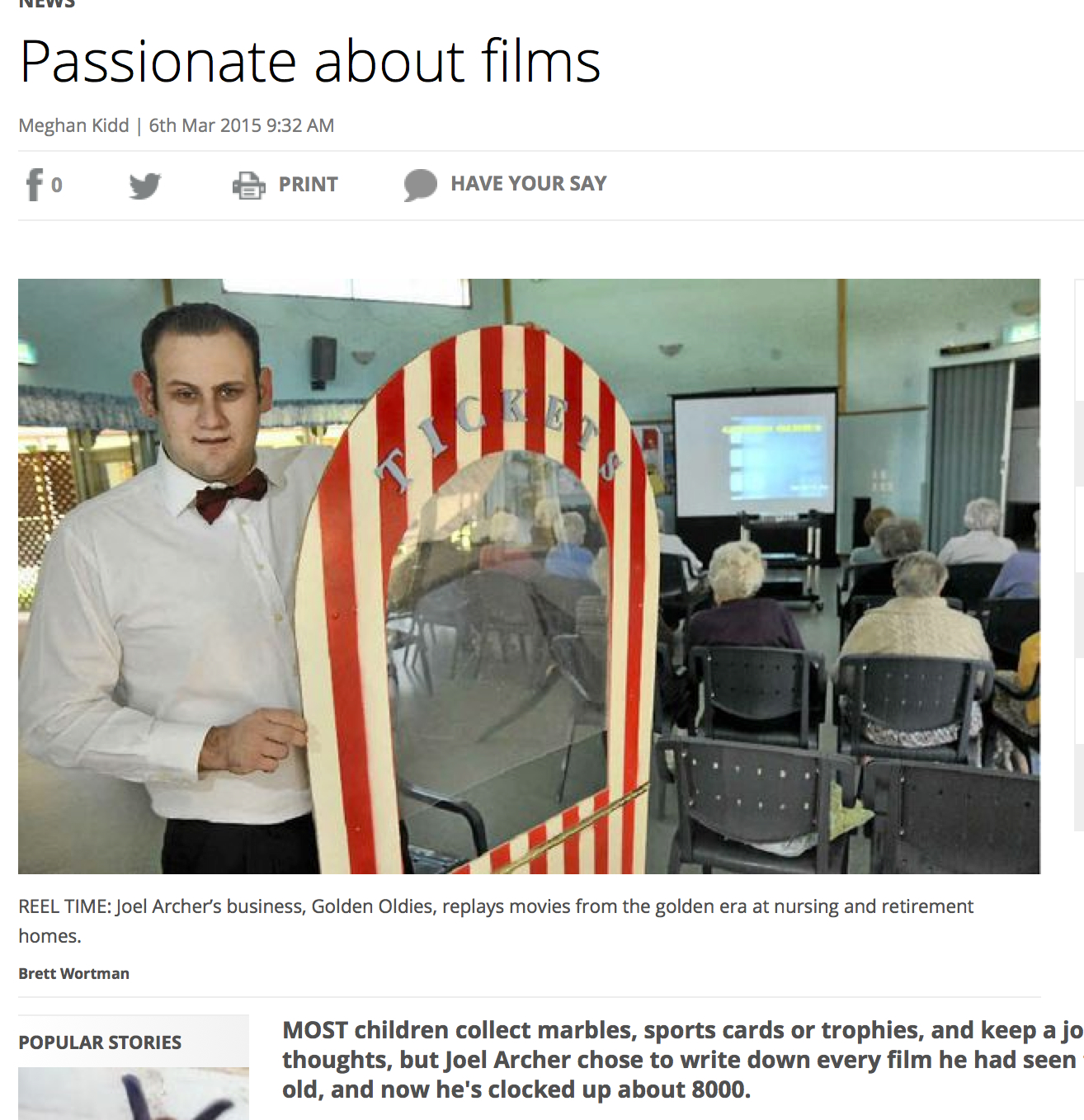
Golden Oldies is attracting local publicity.
For 15 minutes, 1964 footage pitching the capital city of Queensland to potential immigrants from Britain, from a series titled Life in Australia, elicits small exclamations of recognition. The film extolls the pleasures of the city, then of 600,000 people, with its subtropical climate and trappings of modernity including a busy stock exchange and a port where bales of wool are shipped out to keep the world warm.
In scenes of suburban hearth and home, Dad puffs on a cob pipe, Mum bakes, and daughter emerges from under a hair dryer to head out on a date. Her young fellow knows the scene: they take in nightclubs with names like The Pelican and TC’s Sound Lounge. They catch a few bars of the Queensland Symphony Orchestra, jump on a cablecar to the Cloudland Ballroom, and at a jazz club groove to the Rick Forbach Sextet.
Weekends, if the footage is to be believed, the city is a sporting mecca with rugby, racing, rowing, bowls, and fishing. And on Sunday, everyone is off to some church or other in smart suit or fine frock and hat.
“You couldn’t put smoking in the movies, now,” mutters the gentleman in black cap.
“Back then everyone had a choof,” offers Archer.
The session’s feature presentation, Howard Hawks’s Bringing Up Baby, will struggle to top this.
From the 1970s, research has suggested the benefits of transporting the dementia-bound, depressed, and merely forgetful elderly back to their era of greatest competence, and this is what Joel Archer has stumbled onto — not via medical journals (where the studies have in any case received little attention), but via his own intuition.
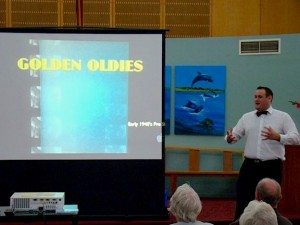 He says nursing-home staff often say to him, as he puts it: “’When we first booked you, we couldn’t imagine the oldies would sit there that long; we were shocked by how glued they were to the screen because of what those memories are, for them.’”
He says nursing-home staff often say to him, as he puts it: “’When we first booked you, we couldn’t imagine the oldies would sit there that long; we were shocked by how glued they were to the screen because of what those memories are, for them.’”
In the early 1980s, renegade Harvard psychologist Ellen Langer found that people in their late 70s or 80s struggling with cognitive decline fared far better in settings that replicated their glory days. She took a group of aging men back to surroundings like those of their young adulthood and asked them to act and speak as they would have, then. They experienced marked improvements in their dexterity, strength, flexibility, hearing, vision, and memory.
Langer and colleague Judith Rodin showed that the well-being of the elderly greatly improved when they were provided choices and responsibilities as simple as being asked to care for house plants.
In 1991, a young doctor, Bill Thomas, persuaded a nursing home in northern New York state to bring in dogs, cats, and 100 parakeets, and then a flock of laying hens, a colony of rabbits, and the children of people working there. That brought the home’s depressed and lonely residents to life. Their need for medications plummeted, particularly psychotropic drugs used to suppress agitation.
Since 1992, the village of Hogeway, in the Netherlands, has provided a variety of socio-economic and cultural contexts from recent history in which elderly people with dementia can live, while employees act out reinforcing roles.
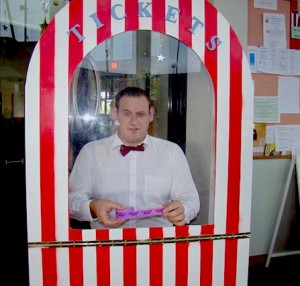
Archer when Golden Oldies began, in 2011.
Archer started his business in 2011 and named it Golden Oldies. Back then, he was lucky to get a booking or two a month, but now regularly visits four or five nursing homes a week. Among his varied programming are themed shows centred around, for example, residents’ military service.
He has some 200 facilities on his books in Queensland and northern New South Wales. Homes’ limited budgets are his biggest challenge. His best business is the coastal strip comprising Brisbane and the Gold Coast, along with the Sunshine Coast just to the north, where Archer grew up; together, those may soon become Australia’s most populous and elderly urban area, booming to well over the current 3.4 million people.
To appeal to younger as well as older Queenslanders, Archer offers both Golden Oldies and a parallel program called Journey Through Film, his illustrated presentations about film history. He also has been traveling within Queensland to present a History of Australian Cinema program to school students and seniors. All are marked by his passion for his subject matter, and his unselfconscious delivery. While he may lack academic rigour, he displays no academic bombast. He has a broad accent you wouldn’t hear from anyone putting on airs.
Few who come to his shows would consider themselves film buffs, he says; but often, nursing-home residents “were there when a film first came out, and they remember their experiences.” Over coffee one day, after a presentation at an old-folks’ home on lushly vegetated Bribie Island, north of Brisbane, he says: “It never ceases to amaze me, the influence film has had, even on people who speak minimally about film.”
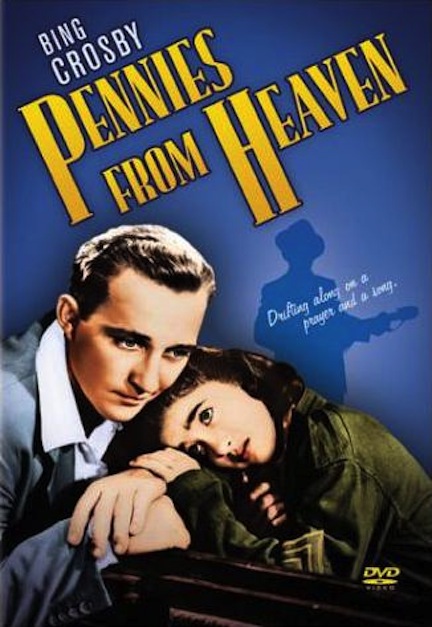 To make his point, he launches into a string of anecdotes.
To make his point, he launches into a string of anecdotes.
At a nursing home on the Sunshine Coast, north of Brisbane, he screened the 1936 Crosby vehicle Pennies from Heaven, and “an old man, 90, starts singing word for word the song ‘Pennies from Heaven.’ A lady pokes my shoulder and says he has barely said a word in 20 years.” Everyone cheered, “and tears were streaming down his face.”
An elderly woman in a wheelchair was demented and disconnected from the world, and “you couldn’t connect with her verbally, at all. But I put on White Christmas, and Bing Crosby starts to sing, and her frail fingers begin to tap on the side of the chair.
“A 95-year-old woman said to me: ‘It’s great what you’re doing. I’d love to see my first film.’ I said: ‘You’ve got to tell me the title, love, because I won’t be able to guess it.’ And she goes: ‘Oh, I don’t remember; it was too long ago. But I do remember one thing: it was set in a jungle and it had the word “green” in it…’
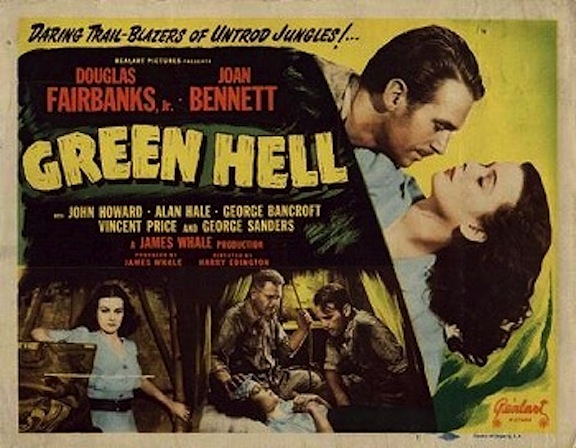 “I began searching, and it took me days; I nearly gave up hope. Then I came across a late James Whale film called Green Hell starring Douglas Fairbanks Jr., pretty much a B feature from 1940. And we figured out that when she first saw the film, she was 13 years old. We were able to backtrack all the way to the cinema where she watched it, in Fortitude Valley, in Brisbane. We screened it for her, and it was amazing, watching this woman go back to when she was 13. She said it was the first film she went to on her own — as ‘a big girl.’”
“I began searching, and it took me days; I nearly gave up hope. Then I came across a late James Whale film called Green Hell starring Douglas Fairbanks Jr., pretty much a B feature from 1940. And we figured out that when she first saw the film, she was 13 years old. We were able to backtrack all the way to the cinema where she watched it, in Fortitude Valley, in Brisbane. We screened it for her, and it was amazing, watching this woman go back to when she was 13. She said it was the first film she went to on her own — as ‘a big girl.’”
Ask Archer a question, to clarify his own reminiscences, and his gaze may wander; let him run, he locks in: “I met another woman, Nuala, who remembered a musical number, ‘Tiptoe through the Tulips,’ from the first film she ever saw, called Gold Diggers of Broadway, 86 years earlier with her older sister in a cinema on Queen Street, in downtown Brisbane.
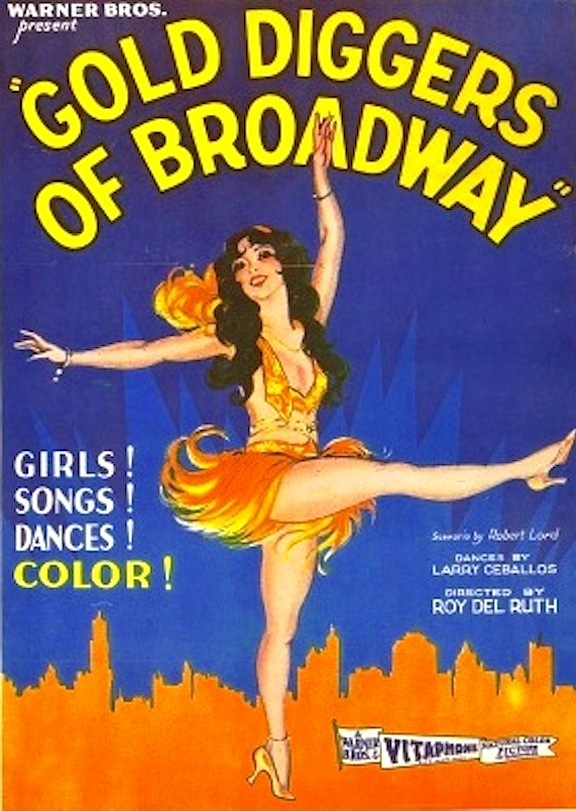 ”She’s among a rare few people in the world who ever saw it first hand,” he says: He screened for her, from a compilation DVD, the only two surviving segments of the film, and one was a musical number that she could recall acting out with her sister during the school holidays.
”She’s among a rare few people in the world who ever saw it first hand,” he says: He screened for her, from a compilation DVD, the only two surviving segments of the film, and one was a musical number that she could recall acting out with her sister during the school holidays.
“I met one woman who was 108 and was an artist, and she showed me one of the drawings she made from a silent film that she saw. I gathered that she’d watched Crisis, in 1913, as a little girl. It was a melodramatic Australian short feature that was very successful.”
He and an elderly man in Brisbane “were talking about the good old days, having a good old jaw, and he said he used to play the flute to silent films when he was young, up in Cairns [in northern Queensland], at the Pineapple Theatre.

Archer with Nuala.
“I said, ‘OK, I’m going to really look into this’ because I often go up to Cairns.
“I’m looking and looking, thinking, ‘there’s no bloody Pineapple Theatre.’ But then I went to the historical society, and found a picture of this old theatre called The Palms, with a bunch of people out in front of it. I took a copy of the picture back to this gentleman, and he points at it and goes, ‘That’s me!’ and I said, ‘It can’t be; it’s the Palms.’ He said, ‘Look up.’ The cinema owner was an eccentric, and he grew palm trees at the top of the theatre, so you couldn’t see the base of them; but if you stood out the front of the theatre, it looked like a big pineapple.
“The old bloke pointed at the picture and said, ‘There I am.’ An eight-year-old boy with his flute, smiling. 1924 or ‘25. Unbelievable.
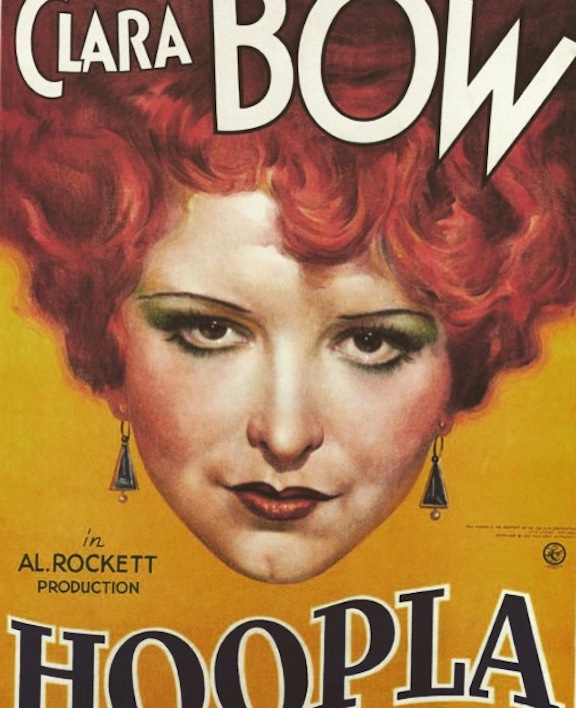 “He goes, ‘I remember Sunrise.’ I said, ‘Murnau’s Sunrise?’ [from 1929, about a farmer who has an affair and murders his wife]. And he goes, ‘Yeah, audiences were just so disgusted with it, and yet they were compelled by it.’ He played the flute to it!
“He goes, ‘I remember Sunrise.’ I said, ‘Murnau’s Sunrise?’ [from 1929, about a farmer who has an affair and murders his wife]. And he goes, ‘Yeah, audiences were just so disgusted with it, and yet they were compelled by it.’ He played the flute to it!
“He said, ‘I’m 90, I barely remember my underpants.’ But he remembered that.”
At another home, a resident recalled arriving from Italy at the Port of Brisbane in 1933, aged five, and seeing, from the boat, a billboard advertising Clara Bow’s new film, Hoopla. “She said,” reports Archer, “that she was so scared coming to Australia because she couldn’t speak a word of English and no one would know her and no one would understand her; but her name was Clara, too, so when she saw the poster she began screaming in excitement to her mother, ‘Mamma, mamma, they know I’m coming.’”
Archer is beside himself — it’s film’s and film-going’s capacity of common humanity that most engages him. He began presenting movies in an unlikely communal setting, while homeless. “I did time on the street, and it’s amazing how much cinema played a part in that,” he says. “I would do silent-film screenings in the park, with no music, Charlie Chaplin and stuff like that. I had just my projector and my DVD — I didn’t have any speakers or stuff like that, then; and I projected onto a wall at 2 or 3 in the morning with homeless guys. We’d just sit and have fun.”
 At 20, he began running community barbecues for the homeless. “I was barely off the street, myself,” he recalls. “I built it up to feeding about 70 people a week. I got businesses and companies on board, and just made it happen.”
At 20, he began running community barbecues for the homeless. “I was barely off the street, myself,” he recalls. “I built it up to feeding about 70 people a week. I got businesses and companies on board, and just made it happen.”
 Today his well-publicized “Winter Warmth” and similar events, some in collaboration with his wife Brianna and his younger sister, Jordyn Archer, provide food and clothing for several hundred people living on the street or “doing it hard” around southeast Queensland. In one effort, Archer organizes volunteers to visit kids in hospital and shut-in elderly people on Christmas Day. He has made some short films, and aspires to write and shoot a full-blown feature about loneliness at Christmas, set in Brisbane in the 1950s and ’60s, in Technicolor.
Today his well-publicized “Winter Warmth” and similar events, some in collaboration with his wife Brianna and his younger sister, Jordyn Archer, provide food and clothing for several hundred people living on the street or “doing it hard” around southeast Queensland. In one effort, Archer organizes volunteers to visit kids in hospital and shut-in elderly people on Christmas Day. He has made some short films, and aspires to write and shoot a full-blown feature about loneliness at Christmas, set in Brisbane in the 1950s and ’60s, in Technicolor.
He confides that in all his projects, his religious faith motivates him, but as an ethos, rather than evangelical campaign; he wishes to “show God” to others, not preach godliness. Also key is his acceptance of how his mind works – on overdrive. Explaining how he ended up on the street, he says: “I wasn’t one of those hard-luck kids. I was from a brilliant family. But all my life I battled with Asperger’s and ADHD, so I was difficult, at the best of times. But I found myself, on the street.”
Crucially, he says, “I saw Sullivan’s Travels, from 1941,” in which a director of escapist films learns about life on the road, “and I could not get that scene out of my head where they show a film [a goofy cartoon] to prisoners, and everybody’s laughing. It was such an idealistic thing, but I said, ‘That’s what the street needs.’ And I’d sit with these guys, and we’d find power in the park.”
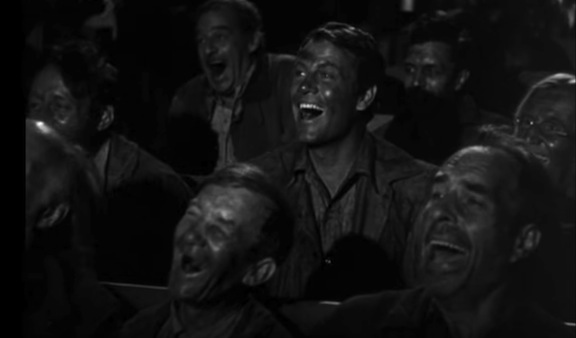
n
Homeless men watching movies after midnight in secluded corners of parks where cops wouldn’t find them and move them on… Should be a scene in that Joel Archer Christmas feature.
Archer makes hay of the unanticipated. He got the idea to bring films to care homes, for example, one day in his teens. He fell into conversation at a bus stop with a complete stranger, and told her how he delighted in watching silents with his grandmother. The woman said she loved the silents, too, long ago, and wished they were screened, still. A light went off in Archer’s head.
Just as unanticipated are many connections he makes in care homes — when, for example, “a lady told me about her first film, and something she said pricked my ears and I said ‘Hang on, love… What was that first film?’ She said, ‘Oh, no one cares…’ and I said, ‘No, no, I’m very interested.’
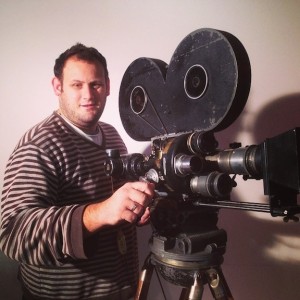
Joel Archer hams it up with a cinema-museum camera.
“She said it was about people chopping trees, and ‘I think it was called Tall Timber.’ I thought, ‘I’ve heard of that film; that’s a lost Australian silent film.’
“She told me she was born in 1920 and she went to the film when she was six years old, on a cold winter night in 1926.
“I asked her, ‘Do you remember much of it?’ And she said ‘Are you kidding; I remember it bit for bit.’ She was able to give me a whole synopsis of the film: what was exciting, and the tension. She was well into her 90s, but remembered it vividly.”
At that point, next to nothing was known about Tall Timber; all the remained was a lobby card and a newspaper article from back in the day.
For several years, now, Joel Archer has been scouring small, often abandoned cinemas in Australian cities and country towns, on a quest for rare and abandoned films. He dreams of finding great, lost classics of cinema, whether American, Australian, or other.
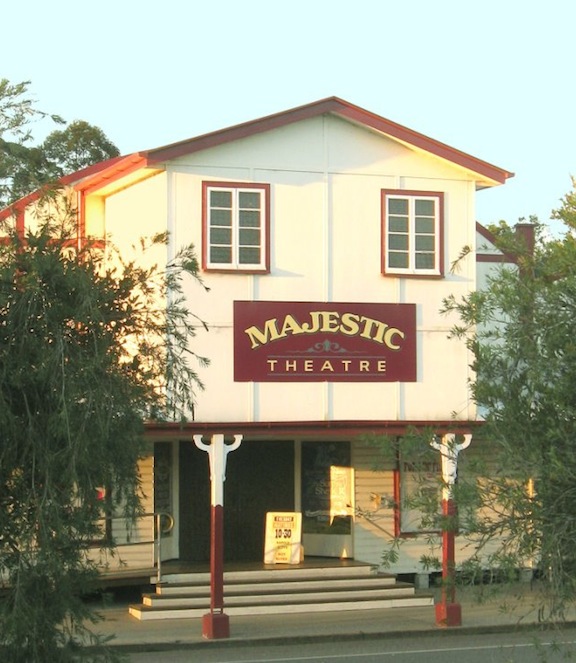 He firmly believes that gems are concealed in movie houses’ storage areas, or under their stages, or in the collections or sheds of elderly enthusiasts or descendants of cinema operators. “I know just statistically that films are still out there in Australia,” he says. “You’ve just got to find them.” He has laid his hands on some reels of film, and believes the history of film distribution in Australia suggests that more remain to be rediscovered.
He firmly believes that gems are concealed in movie houses’ storage areas, or under their stages, or in the collections or sheds of elderly enthusiasts or descendants of cinema operators. “I know just statistically that films are still out there in Australia,” he says. “You’ve just got to find them.” He has laid his hands on some reels of film, and believes the history of film distribution in Australia suggests that more remain to be rediscovered.
His first and most notable finds came to him a couple of years ago from the shed of a mentor, Ron West. While Archer was growing up on the Sunshine Coast, 140 kilometres (87 miles) north of Brisbane, he made the acquaintance of West, a silent-film aficionado who had moved there in 1973 from Sydney, where he had worked for 13 years as a sound engineer for the Australian Commonwealth Film Unit. From 1973 to 1994, West and his wife, Mandy West, ran the Travelling Film Festival of first-release and avant-garde films at the Majestic Theatre, which they managed. That’s a heritage-listed cinema, and the only cinema, in the town of Pomona, in the shire of Noosa, which is now a beach-holiday area but for most of the 20th century was a lumber and farming centre. The Majestic began its life as a multi-purpose town social venue. The Travelling Film Festival harked to the picture show men who had stopped at the Majestic Hall in the 1920s.
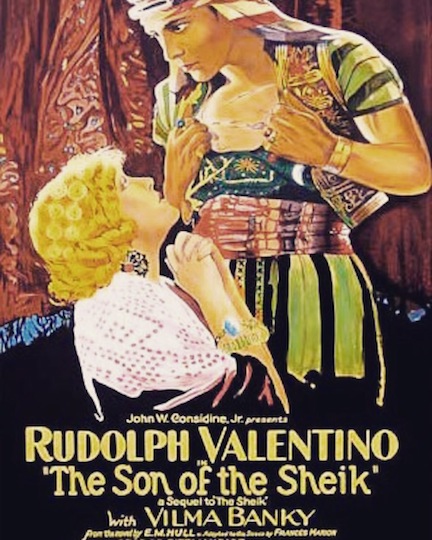 That past returned in 1987 when West got a request to present a silent film there for a visiting group. He had a print of the 1926 Rudolf Valentino hit, The Son of the Sheik, so screened that. West, a pipe-organ enthusiast, accompanied the film on his restored Wurlitzer. The enthusiastic response of members of the visiting group — travel agents, by good fortune — generated so much interest that the Wests were soon showing silent films, and only silent films, six days a week, to locals and visitors from far afield.
That past returned in 1987 when West got a request to present a silent film there for a visiting group. He had a print of the 1926 Rudolf Valentino hit, The Son of the Sheik, so screened that. West, a pipe-organ enthusiast, accompanied the film on his restored Wurlitzer. The enthusiastic response of members of the visiting group — travel agents, by good fortune — generated so much interest that the Wests were soon showing silent films, and only silent films, six days a week, to locals and visitors from far afield.
Archer got to know West before moving to Brisbane several years ago, and realized from talking to him that Australia’s geographical remove from film-making centres like the United States and England made it a possible haven for reels of film. That’s because, particularly before 1927 and the advent of talkies, beginning with The Jazz Singer, major studios insisted little on Australian distributors returning rentals — the shipping and logistics were so cumbersome.
So, reels of film ended up tucked away inside or out the back of Australian cinemas, which were frequently multi-purpose facilities. Or, projectionists took reels home and stashed them in their own sheds. Australian men love their sheds, and West had packed his with film. He and Archer set to work sorting through it, and in 2014 found the only known copies of two black-and-white Italian silents, The Redeeming Angel and The Prisoner of the Owls (both 1913), along with a German feature, The White Desert (1922). The last of those is the only surviving installment of a “predator series” of wildlife films by John Hogenbeck and his brother Carl, a circus owner. It featured outdoors shots with staged scenes, including a then-innovative one in which a polar-bear appears to devour an explorer. In 2015, the renowned Pordenone festival of silent film, Le Giornati del Cinema Muto, in Italy, invited Archer to attend a screening of the two Italian short films.
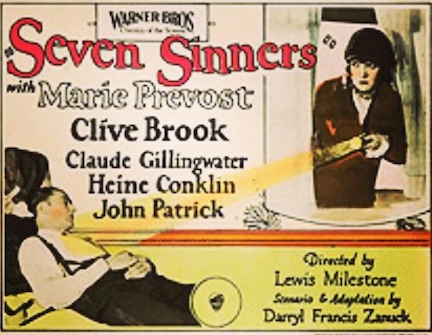 Archer and West’s big discovery, like the three European films, had come to West from family members of a long-deceased Melbourne cinema worker who apparently had taken home films that had ended their runs. The tinted, 35mm, nitrate print was missing its title sequence, so Archer and West sent it to California, where Warner Brothers identified it as a 1925 crime caper long thought lost, Seven Sinners. That was the first feature by Lewis Milestone, produced by megabucks mogul and aviator Howard Hughes. Milestone would later win Oscars for Two Arabian Knights — in 1928, at the first-ever Academy Awards ceremony — and for All Quiet on the Western Front (1930). He also directed two more Oscar-nominated films, The Front Page (1930) and Of Mice and Men (1939).
Archer and West’s big discovery, like the three European films, had come to West from family members of a long-deceased Melbourne cinema worker who apparently had taken home films that had ended their runs. The tinted, 35mm, nitrate print was missing its title sequence, so Archer and West sent it to California, where Warner Brothers identified it as a 1925 crime caper long thought lost, Seven Sinners. That was the first feature by Lewis Milestone, produced by megabucks mogul and aviator Howard Hughes. Milestone would later win Oscars for Two Arabian Knights — in 1928, at the first-ever Academy Awards ceremony — and for All Quiet on the Western Front (1930). He also directed two more Oscar-nominated films, The Front Page (1930) and Of Mice and Men (1939).
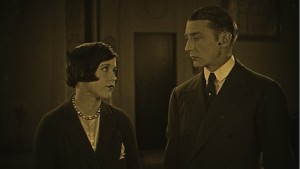
Lewis Milestone’s “Seven Sinners.”
Lev Milstein, born in 1895 in what is now Chisinau, Moldova, became Lewis Milestone after moving during his teens to the U.S., where he joined the Army, served in France during World War I, and while enlisted began making movies, beginning with training films for the military. In 1920 he moved to Hollywood to work for five years for the prolific director Henry King. He then was ready to direct Seven Sinners, which featured English leading man Clive Brook, who later made Shanghai Express with Marlene Dietrich, and Marie Prevost, a star who died in her Los Angeles apartment at 38 of acute alcoholism, alone but for the company of her dog.
Milestone would face difficulties, himself. Bad enough was having to try to control Frank Sinatra and other members of “The Rat Pack” while he made Ocean’s 11 (1960). Worse, apparently, was directing Mutiny on the Bounty (1962), whose box-office failure was largely due to Milestone’s being unable to corral the megalomania of Marlon Brando.
 But those debacles may not have been as distasteful for Milestone as what he’d experienced when the infamous House Un-American Activities Committee hounded him. Milestone found himself in 1947 among a group of witnesses from film and other arts — the Hollywood Reporter dubbed them “the unfriendly 19” — who insisted on their rights of free speech and political association; others were playwright Bertolt Brecht, screen writers Dalton Trumbo and Ring Lardner Jr.
But those debacles may not have been as distasteful for Milestone as what he’d experienced when the infamous House Un-American Activities Committee hounded him. Milestone found himself in 1947 among a group of witnesses from film and other arts — the Hollywood Reporter dubbed them “the unfriendly 19” — who insisted on their rights of free speech and political association; others were playwright Bertolt Brecht, screen writers Dalton Trumbo and Ring Lardner Jr.
 Somewhat miraculously, the film in West’s shed had remained in good condition: Warner Brothers found that 87 percent of it was salvageable. It had come to West in plastic rather than metal cans, ensuring it had a little air but not too much, and apparently that had served it well.
Somewhat miraculously, the film in West’s shed had remained in good condition: Warner Brothers found that 87 percent of it was salvageable. It had come to West in plastic rather than metal cans, ensuring it had a little air but not too much, and apparently that had served it well.
Warner, which paid Archer and West a few thousand dollars for the print, has told them it will restore the film in collaboration with The Academy of Motion Picture Arts and Sciences, and release it on DVD.
Finding lost films in Ron West’s shed is one thing, but locating them in country towns is a mighty challenge.
“I’ve found heaps of odds and ends but no holy grail, yet,” Archer says. “Still, Queensland is massive.” In a couple of months he’s heading to the southern, island state of Tasmania, to search there. Still largely unexplored, he is certain, are scores of abandoned or decrepit cinemas, or town halls or other buildings that housed them.
Almost ensuring films lie hidden, out there, in Archer’s mind, is that the heyday of movies was dramatic, throughout Australia. During the silent-film era, through to the late arrival of television in 1956 (later, in the smaller population centres), “demand here was ravenous,” he says. So much so that deliberations over the basic wage took into account the cost for families to go to the movies on a Saturday. While American movies predominated, film exhibitors sourced titles in the United Kingdon and Europe, just to have something new for their screens.
Then there was the output of the surprising local industry. Between 1919 and 1929, about 100 silent feature films were made in Australia, which was quite an achievement given that the country had no studios of the Hollywood variety.

The infamous “Term of his Natural Life” blaze.
It now seems likely that only about 15 of those Australia silent features have survived, along with an uncertain number of shorts and non-fiction titles. Tales abound of large collections of nitrate film being dumped through exaggerated fear of suddenly bursting into flames. Neglect and worse have played a role, too. In 1927, during production of the hugely successful For the Term of his Natural Life, based on a classic novel about Australia’s colonial convict era, the script called for a boat to catch fire. In an infamous event in the country’s film history, the producers put in a call to vaults in Sydney that housed Australian silent films, and were provided with enough nitrate stock to create a hugely dramatic fire show. Its drawback: up in flames went some unknown percentage of the country’s silent-film history. In that one fateful event, some 10,000 gallons of crude oil burned along with two metric tons of old nitrate film. How much was Australian, rather than imported newsreels and the like, has never been determined.
Those are the odds Archer is working with. He says that as he searches, “so many people tell me, ‘Sorry, you’re too late.’ I get more rejections than guys do in online dating. You’ve really got to have something internal pushing you, because otherwise you’d give up and say, this is just hopeless.”
The thought that he’s on too cold a trace does occur to Archer – “I’m generations too late,” he allows — but it does little to suppress his tenacity in the hunt. That, in any case, is stoked regularly by people telling him he has only just missed out on their sheds of film. He professes: “I still believe there’s a hell of a lot; it could be really rural,” hours of driving into far-flung areas of the state and country.
Serving him well, in his quest, is his enthusiasm, his obstinacy — call it, his persistence — and his secret weapon: a young fellow film wrangler named Tom Milner.
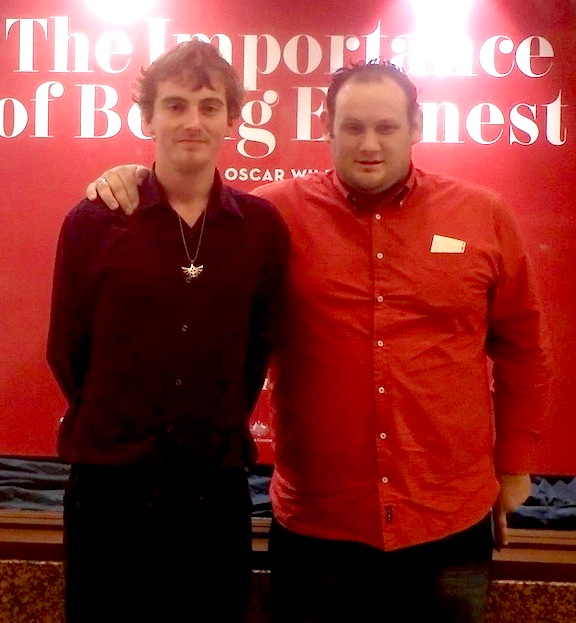
Tom Milner & Joel Archer.
Joel Archer and Tom Milner met in a mental-health support group of the kind that they now sometimes address. Says Archer: “We tell ‘em, ‘We’re as crazy as you are, but we get out there.’”
Archer quickly learned that Milner, too, was obsessed with film, and early film, in particular. As often as finances allow, they head out to rural areas in search of their quarry. “We try to have a life on the road that is going to gravitate us to success,” says Archer. He admits that their method amounts to “quite a lunacy.” They don’t pore over the Internet data bases of Australian cinemas, rural or other, nor phone ahead to arrange their visits. They don’t even consult published sources as a means of locating where cinema spaces are known to have existed. Instead, they hire SUVs, sleep in the back, and go from town to town to see what they can find. “We just go on fun and adrenalin,” Archer says.
“I do have a process. As soon as we get to town, I instantly look for anything that looks like an old cinema. They stand out in Australia. And then I start talking to locals, and just tell them our story. I’ve been in a pub, started chatting, and 18 minutes later I’m in the projection room of an old cinema that shut down years ago.”
He tries to ascertain who were the long-term operators of cinemas and multi-purpose community halls, but sadly those are almost all dead, he says; “so I try to connect to the offspring, and that’s usually the key to the door.”

Odds and ends, but no holy grail.
Among those “odds and ends” they have discovered have been snippets of a Tom Mix cowboy film where Mix’s hat makes him unmissable but the print is so degraded as to be unidentifiable, and a 1940s Australian public-service film about caring for children with neuro-developmental disorders. Even meagre finds like those spur them on. But pickings are so lean that the work calls for extreme measures. Says Archer: “Tom jumps into all the attics. He has Asperger’s, and ADHD, and Tourette’s. He’s larger than life, and has a zest for adventure. The two of us together… I think people think we’re just like Cheech and Chong, without the pot.”
Thirteen hours’ drive northwest of Brisbane, in Blackall, a grazing town on the Tropic of Capricorn beyond which is the metaphoric “beyond the black stump,” the two explorers were at the pub, drinking lemonade, “and next thing you know,” says Archer, “Tom is on a roof that’s over six metres high, going all through space at the top. And then we were looking under the stage, and huntsman spiders were crawling over his face.
“He’s game.”
In Roma, seven hours closer to Brisbane, Archer was overheard talking about his quest, word got around, and by the next morning the 90-year-old former operator of a picture theatre had arranged for them to visit the venue, 45 minutes away in Surat: the Astor Theatre, one of the last intact examples of the movie houses built all around Queensland in the 1920s and 1930s. It had barely changed since a roof was put over the originally open-air space, says Archer, and while no film was there to be found, “the lobby cards and the ice-cream box were still there. The 35mm projector was still there. It hadn’t been touched. Unbelievable.”
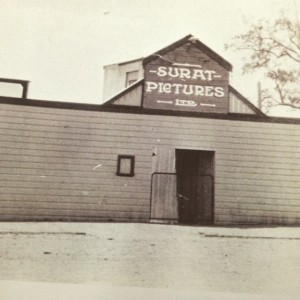 What seems to gain them access to movie houses, as they travel around, is “the infectiousness that comes from us as amateurs,” he says. “We don’t roll up in a government car and flash our badges. We’re just these young guys who grew up around film.” He even does the round of municipal garbage sites: “I say, ‘If you get colour film, give me a ring; but especially if it’s black and white, I’m your guy.”
What seems to gain them access to movie houses, as they travel around, is “the infectiousness that comes from us as amateurs,” he says. “We don’t roll up in a government car and flash our badges. We’re just these young guys who grew up around film.” He even does the round of municipal garbage sites: “I say, ‘If you get colour film, give me a ring; but especially if it’s black and white, I’m your guy.”
He and Milner dream of finding the most missing films of them all, like The Mountain Eagle, Alfred Hitchcock’s second silent film, set in the Austrian Alps.

Astor Theatre
“And we’re always looking for The Blue Mountains Mystery, from 1921, which is one of Australia’s most sought-after silent films,” long presumed lost.
“It wouldn’t even be about money, but just the excitement,” Archer declares. His quest can only be a labour of love, because no one would hire two nutty guys to head out on so semi-wild a goose chase. He says even his mother has said to him: “’I believe in you so much, because you’re crazy enough to fail that many times and still go looking, and then be there, right as rain, when the shed full of nitrate comes up, 300 k’s outside of Toowoomba.’”
Previous Post: Ruby Bridges, 6, Symbol of Desegregation

